 I realize the economy is wigging out and times are starting to get tough again.
I realize the economy is wigging out and times are starting to get tough again.
Of course, with the price of precious metals back on the rise, you could head out into the wilderness and try to find a stray nugget or two.
Then again, if you aren’t planning on prospecting for gold and silver anytime soon, keep in mind there are plenty of other natural riches out there just waiting to be found that can put a decent amount of cash in your wallet.
Well … assuming you know where to look.
With that in mind, here are five items in nature that have some of the biggest finder fees. Who knows? A couple of these might even be hiding in your own backyard right now:
Truffles
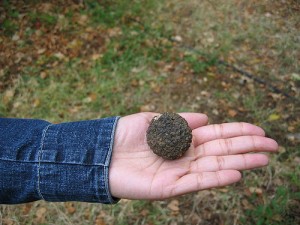 Bling Meter: Truffles can sell for more than $6000 per ounce. A very large truffle fetched a record $330,000 in 2007.
Bling Meter: Truffles can sell for more than $6000 per ounce. A very large truffle fetched a record $330,000 in 2007.
Why They’re So Expensive: Apparently, truffles are very difficult to cultivate. I assume that’s because they’re fungal fruiting bodies. (Don’t ask.)
Where to Look: Under trees such as beech, poplar, oak, birch, hornbeam, hazel and pine. They’ll be hiding between the soil and leaf litter. Be sure to bring a truffle hog or a dog trained for sniffing them out.
(Reality) Check, Please: While difficult, truffle cultivation is getting easier — and that will eventually lead to lower prices.
Saliva nests
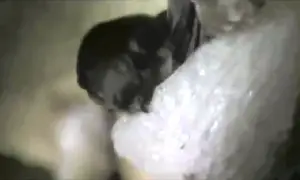 Bling Meter: The “red blood” variety can fetch up to $285 per ounce.
Bling Meter: The “red blood” variety can fetch up to $285 per ounce.
Why They’re So Expensive: “Saliva nests” are real birds’ nests that come from a species of cave swift. The nests — a key component of a Chinese delicacy known as bird’s nest soup — are made from a glutinous substance in the bird’s saliva. Unfortunately, there just aren’t enough cave swifts in the world to satisfy demand.
Where to Look: Your best bet are the limestone caves of Borneo.
(Reality) Check, Please: At approximately 10 grams each, “red blood” nests on the open market sell for $45.
Saffron
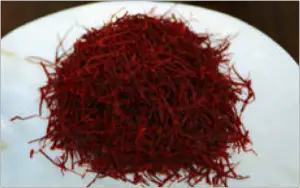 Bling Meter: The market price for this valuable spice is about $162 per ounce.
Bling Meter: The market price for this valuable spice is about $162 per ounce.
Why It’s So Expensive: Extensive labor is required to produce and harvest saffron; in fact, it takes 80,000 saffron flowers to make a single pound.
Where to Look: The saffron crocus prefers locations with semi-arid lands with hot-dry summer breezes.
(Reality) Check, Please: Costco is currently selling a 14-gram bottle for $80. Thankfully, a little goes a long way.
Meteorites
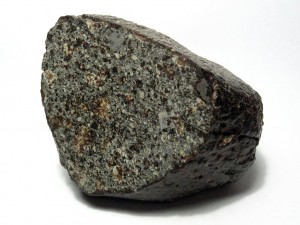 Bling Meter: Lunar or Martian meteorites can bring the lucky finder more than $50,000 per ounce.
Bling Meter: Lunar or Martian meteorites can bring the lucky finder more than $50,000 per ounce.
Why They’re So Expensive: Not only are meteorites much rarer than precious metals and other stones, but they are also harder to find because they aren’t clustered in veins. Instead, they reside in completely random locations.
Where to Look: Although they can be found anywhere, locations with an arid climate — such as the deserts of the US Southwest — are best because dry air is better-suited for meteorite preservation.
(Reality) Check, Please: There have only been 1600 meteorites ever found in the United States — and only 50,000 worldwide.
Sturgeon eggs
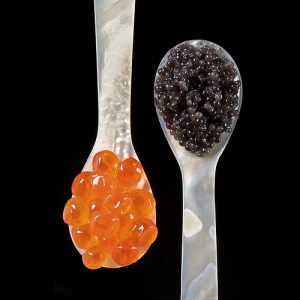 Bling Meter: The top grade of beluga caviar can cost $143 per ounce — or more.
Bling Meter: The top grade of beluga caviar can cost $143 per ounce — or more.
Why They’re So Expensive: The beluga sturgeon is an endangered species and, as a result, only 100 or so are captured each year.
Where to Look: You’ll need to charter a fishing boat on the Caspian Sea.
(Reality) Check, Please: The price of caviar is expected to rise even higher in the coming years due to shrinking supplies — which makes me glad that I prefer cheeseburgers.
Photo Credits: (truffle) picdrops; (nest) wellness origins; (saffron) Costco;(meteorite) H. Raab; (caviar) thor

I prefer “curbside gleaning” for more moderate rewards….
Why did I think truffles were some chocolate dessert? I had no idea they were part of the fungus family and very rare! I guess I just learned something that could equate to cash. 😉
I can’t wait for my husband to get home so I can spring on him our next “get rich quick scheme”! Saffron! We live in the perfect climate. Now all we have to do is plant those 80,000 flowers and let the dough roll in! heeeeee
I have often wondered why delicious chocolate and fungi have the same name.
Thank God I too have simple tastes. I watched a show once that featured the most expensive meals you could buy, and truffles and caviar were on the menu. These people paid 20,000 dollars for their meal, or something ridiculous like that.
I still can’t understand the appeal of caviar. I had it once before at a fancy party I went to and hated it!
@Len – How much for saffron covered surgeon eggs, sauted in truffle oil and served with bird’s nest soup on a bowl made of meteorite?
@Jenna, is your last name Penzo???
@Dr Dean – No, why?
Just sounded like Penzo humor, I love it! 🙂
The US has 7% of the world’s land, but only 3% of its meteorites?
Wow, finding a meteorite is like wining the lottery, well, a small lottery.. Cool post!
@Olivia: Okay, you stumped the dummy. What is curbside gleaning?
@LittleHouse: I don’t think you’re alone, Jen! In any case, the only truffles I’ve ever eaten are the chocolate ones.
@Mrs. A: Good luck with that. Let me know how it turns out.
@Everyday: Not sure either, Kris.
@Jenna: I hope that was a rhetorical question. LOL
@Dr. Dean: “Retiring like flies.” Oh, Dr. Dean… I hope you don’t mind me saying that you can officially put me down as a big fan of both mac & cheese AND mangled metaphors (that is usually my area of expertise – glad to know I’m not alone.) 😉
@Greg: I guess so. Your neck of the woods would be “prime” real estate for finding them.
@MFO: Funny thing is, most people probably wouldn’t be able to tell the difference between a meteorite and a common stone even if they saw one.
Curbside gleaning. It harkens back to my poor art student days. Especially promising at term’s end. You see an interesting looking pile on trash day and rummage through it. It’s akin to dumpster diving, without the “gross” factor. In some areas it’s considered fairly normal behaviour. I lived near the Cooper Union, Tisch School of the Arts, and Parsons School of Design. Prime pickings.
Brooklyn old-timers call that “mungo-picking.” Most Brooklynites were not ashamed to call themselves mungo pickers.
.Mungo is the word that sanitation workers call salvageable items put out for trash, and pickers are the scavengers that grab those items.
Weird, my co-workers were talking about truffles and how expensive they are today. Luckily, all the foods I like are simple and cheap.
I had Mac and Cheese with shaved truffles at a local restaurant. Heavenly! And I hate mac and cheese-grew up eating Kraft every other meal.
My profession may become as rare as those things you listed above, if things keep going as they are! My peers are retiring like flies…:)
I love curbside gleaning too. I am amazed at how much useful and sometimes valuable stuff folks will just put out at the curb as trash.
I have a really big 74 pickup. I will sometimes run the trash route ahead of the trash man and take nice furniture etc to the fireman’s stash. Which is a place run by fire dept to give decent used items away to those who need them but cannot afford to buy them. Or who lost everything in fire. In most states, when an item is placed in trash the owner has surrendered ownership so you can take it.
When my roomies and I were poor art students we got much of our furniture that way. Living in a big city made transporting big things expensive, so people would just leave them on the curb for others. If a new roomie came in with better stuff, we’d leave the poorer pieces out on the curb and hang out the window to see how long it took for someone else to pick it up. Great sport.
A sound old tree -walnut, hard maple oak, wild cherry.
A large veneer log (knot free) can bring four figures.
Wow!
It’s hard to get rich in saffron. I invested in 50 perennial saffron bulbs for $35. a few years back. The green strands of foliage and the purple flowers appear in autumn. When the time is right I put a cushion on the ground next to the saffron bed, and sit to wield a tweezer harvesting the three tiny strands from each flower. The minute threads are placed on a paper towel and left in the kitchen to dry for a week. Then the dark brown strands are placed in a tiny antique pill vial which still has the 60+ year old label from Sharr Drugs in Pompton Lakes, NJ with the word “saffron” typed on it left from when my Grandparents used to purchase saffron every Spring to make 2 loaves of Easter bread for the holiday. I harvest enough to make two loaves and flavor a couple of dishes of paella. In the garden the saffron leaves stay dark green all winter and into the spring. The foliage disappears for the summer, to sprout in autumn and flower again. Picking the saffron threads is labor intensive but it’s satisfying to grow your own if you don’t need much. After 5-6 years you will have to dig up the plot and space out the bulbs so they are not over crowded. At this point you ought to be able to market the excess bulbs on Facebook Marketplace or Craigslist and get back your original investment. I’ll let you know how that works out in another three years!
Wow … you never cease to amaze me, Karen. I hope it work out for you!
Add whale vomit (ambergris) to the list
I once lived near a very wealthy neighborhood. Bulk trash day provided some real gems. Nearly new stuff that they were just tired of. Especially before the days of eBay and other online used sales. It was harder to get rid of stuff back then.
Ambergris … yea! Good one, Frank. It’s rare, but quite possible to find it on the beach.